In the lead up to the Academic Staff Awards, we will be profiling the amazing achievements of all of the finalists over the coming weeks.
This week, we take a look at the staff from the Faculty of Science and Engineering.
Research
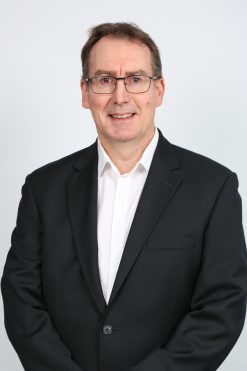 Associate Professor Paul Beggs
Associate Professor Paul Beggs
Excellence in Research: Five Future-shaping Research Priorities
Associate Professor Beggs explains that climate change is the biggest global health threat of the 21st century. His project explores impacts of climate change on human health in Australia and internationally, with a focus on the impacts on airborne allergens and the phenomenon known as thunderstorm asthma. In collaboration with an inter-disciplinary research team of experts from universities and government, Paul has taken a leading role in research at the frontier of this dynamic field.
Additionally, Paul Co-Chairs the MJA-Lancet Countdown in partnership with The Medical Journal of Australia and the Lancet Countdown, uniquely tracking progress on health and climate change at a national level across more than 40 indicators of impacts, exposures, and vulnerability; adaptation and resilience; mitigation and health co-benefits; and public and political engagement. He also co-led the investigations into the environmental factors responsible for, and the emergency response to, the deadly epidemic thunderstorm asthma event in Melbourne, November 2016.
“The understanding gained through this research has been translated into effective and innovative management strategies, improving the health and preventing the death of people living with allergic respiratory diseases both now and into the future,” he says.
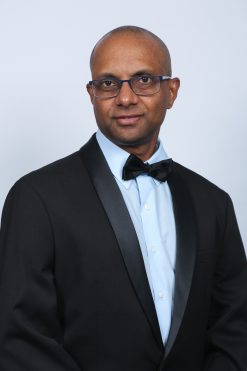 Professor Karu Esselle
Professor Karu Esselle
Excellence in Research: Five Future-shaping Research Priorities
Professor Karu Esselle had been trying for a few years to solve a challenging optimisation problem in electromagnetic engineering with his PhD students using the most advanced optimisation methods in the field, but with limited success. Thus, he and his then new PhD candidate Maria Kovaleva searched the globe for an appropriate mathematician for collaboration and found one next door, at the then Department of Statistics, in Dr David Bulger. Since then, the collaboration between this trio has been producing outstanding results and attracting international commendation.
“Our short-term objective was to find an elegant solution to the troublesome antenna optimisation problem at hand, but in the long term we wanted to develop a versatile method that could solve any electronic engineering optimisation problem with both mixed variables (continuous and discrete) and constraints,” he explains.
“This multi-disciplinary team of researchers has now met the challenge, and the results of our collaboration have been outstanding. We have developed an innovative optimisation method and applied it to solve several design problems, clearly demonstrating its superiority over the optimisation methods previously used in electronic engineering.”
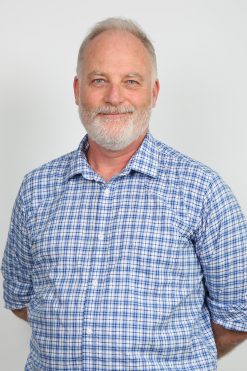 Professor Phillip Taylor
Professor Phillip Taylor
Excellence in Research: Five Future-shaping Research Priorities
For decades, cheap and effective insecticides have been available to protect crops from fruit fly infestation but, with increasing concerns about the impacts on environmental and consumer health, regulatory restrictions now constrain the use of insecticides to the point where they have quite limited efficacy.
Professor Taylor explains that Australia’s ability to produce fruit fly free crops and to access markets is imperilled. “Fruit flies present a substantial economic threat, with outbreaks increasingly common in historically fruit fly free regions of SA and TAS, and very large populations established in the major southern growing regions of NSW and VIC over the past decade,” he says.
“The overarching aim of my research is to provide Australia’s horticulture industries new tools for environmentally and medically benign control of fruit fly pests. Particular effort has been invested in developing the ‘sterile insect technique’ (SIT) in which millions of sterile flies are produced in a factory and released in the field to disrupt reproduction of pest populations. SIT can be safely used both in production regions and in towns, enabling the suppression of insect pests over large regions.
“To support these efforts, I have secured significant financial support from industry, including current grants from Hort Innovation Ltd ($20.5m, $7.6m, and $4.7m) and ARC Linkage ITTC ($3.8m) all led by myself. Research training is a central theme in all of these projects, which support a very large community of HDRs and ECRs across three MQ departments.”
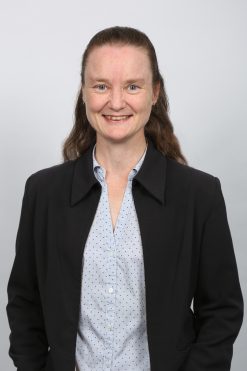 Professor Kirstie Fryirs
Professor Kirstie Fryirs
Excellence in Higher Degree Research Supervisor of the Year Award
Professor Fryirs is an environmental scientist with a specialisation in fluvial geomorphology, which involves the study of rivers and streams. Her supervision approach creates a supportive and productive research environment, allowing students to achieve their highest potential.
“As an applied scientist I have a passion to ensure my research is world-changing and has real-world application and impact, particularly in river conservation and rehabilitation practice,” Kirstie says. “In a century where water availability will be a significant societal and environment challenge, my overarching research philosophy is framed around the need to understand the physical structure, function and condition of river systems so that they can be better managed into the future.”
This philosophy also drives Kirstie’s HDR supervision, to train and enhance the careers of the next generation of environmental managers and scientists. Kirstie’s HDR students are also inspired by, and feed off, her passion for rivers, and their conservations and management.
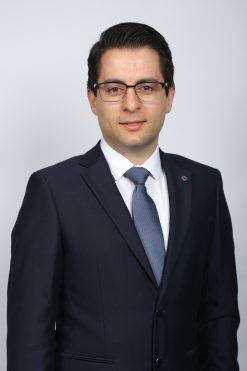 Dr Mohsen Asadnia
Dr Mohsen Asadnia
Macquarie University Early Career Researcher of the Year (STEMM)
Dr Asadnia is a senior lecturer and ARC Discovery Early Career Researcher Award (DECRA) fellow working in the field of mechatronics, biomechanics and Microelectromechanical Systems (MEMS) and sensory systems in the School of Engineering.
The past 10 years of Mohsen’s research career have been spent building a strong, coherent and independent research program based on multidisciplinary and innovative research in the areas of nanotechnology, biomedical sensors and electronic devices.
“My research is focused on the development of bio-inspired sensory systems using MEMS techniques, which is now more broadly applied to the development of micro and nano-scale technologies with potential impact in the real-world, particularly in solving challenges in hearing aid devices,” he explains. “Since May 2016, I have held a ‘balanced’ lectureship in the School of Engineering with teaching, research and administrative responsibilities within the School pf Engineering.
“My primary research interest at this time lies in the exploitation of new physics that utilises novel micro and nano-engineered systems for applications in cancer management, biosensors, and medical diagnostics. My research team aims to develop novel wearable chemical/physical sensors and instruments with artificial intelligence, and internet of things platforms to offer unique benefits such as precision and patient-specific information for diagnosis and treatments.”
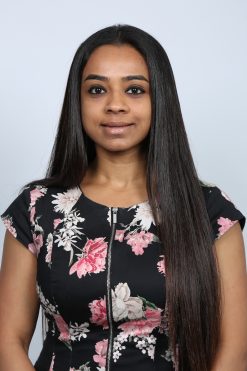 Dr Devika Kamath
Dr Devika Kamath
Macquarie University Early Career Researcher of the Year (STEMM)
Dr Kamath’s core research addresses a critical long-standing question in astrophysics: ‘How are elements in the Universe synthesised?’.
In this context, low-and intermediate-mass (LIM) stars – those with masses of 0.8 to 8 times that of our Sun – are key contributors to the chemical enrichment of their host galaxies. They are known to be the major producers of elements such as carbon – the essence of life – and about half of all elements heavier than iron. However, understanding the process that governs element production remains an unsolved problem in astrophysics for over a century. Devika’s research marries state-of-the-art observations of dying stars with sophisticated theoretical stellar models, to reveal the origin of the elements in the Universe.
“My childhood interest in exploring the Universe and understanding what stars are made of led me to pursue a PhD in the field of stellar astrophysics,” she says. “Driven by my curiosity to understand the origin of elements in the Universe, I chose to work on the dying stages of Sun-like stars with Professor Peter Wood, a theoretical stellar model expert (ANU, Canberra).” This marked the beginning of her career as an astrophysicist. She is currently an Australian Research Council Discovery Early Career Researcher Award (DECRA) Fellow and Lecturer in Astronomy and Astrophysics here at Macquarie.
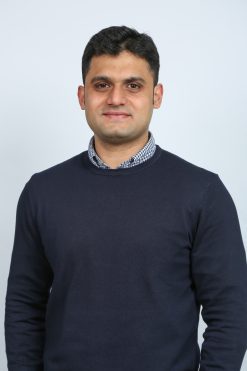 Dr Affan Aziz Baba
Dr Affan Aziz Baba
Excellence in Higher Degree Research (STEMM)
Since the beginning of 1980s, the increasing popularity of commercial wireless communication has led to a huge increase in the volume of transmitted data. World-leading research institutes and wireless service providers have stepped in to deal with the requirements of future wireless communication technologies. However, performance metrics of the systems required for the future wireless technologies are dramatically different as compared to the current generation, which brings about new challenges for the radio frequency (RF) engineers.
Dr Baba explains that in Australia, Macquarie University has led the movement to address the stringent challenges associated with the RF front-end modules required in the future wireless networks.
“The key objectives of my research work conducted here are to design and develop wideband RF front-ends for software-define-radio, address the high cost and low-efficiency issues of on-chip antennas, design dual-band antenna systems for the world’s first entirely Ka-band CubeSat Satellite, and develop mm-wave beamforming antenna systems for next generation wideband wireless communication technologies and Electronics Warfare (EW) systems.
“Our compact and low-cost RF systems are not only important for 5G mobile networks, but they also have great potential in the defence sector to improve Australia’s national security.”
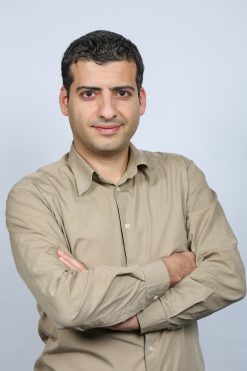 Mr Ali Lalbakhsh
Mr Ali Lalbakhsh
Excellence in Higher Degree Research (STEMM)
Electromagnetic (EM) metasurfaces are engineered structures to manipulate the EM fields of a typical radiating source for a variety of applications, such as satellite communications, communications on-the-move, space exploration and removal of EM interference. However, Mr Lalbakhsh explains that the applications of existing metasurfaces have been severely limited due to costly prototyping and limited operational frequency band.
“In the existing technology, expensive microwave substrates are an integral part of the EM metasurfaces, contributing to the very high fabrication cost and undesirable loss in high-power applications, posing a serious impediment to the industrial applications of them,” Ali says.
“My PhD has been designed to have a real impact as it aims to transform a lavish high-end Electromagnetic (EM) device, only used in very specialised applications, to a low-end module that anyone – regardless of their socio-economic background – can benefit from.
“There is a crucial need for inexpensive and efficient passive metasurfaces that can provide unique Electromagnetic (EM) properties in conjunction with planar high-gain antennas. A full accommodation of this necessity will be a breakthrough in the field, as it will make the bulky dish antennas redundant and satellite communication far more accessible.”
Learning and Teaching
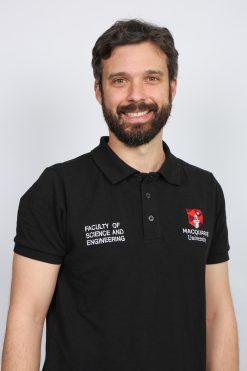 Dr Bruno Alves Buzatto
Dr Bruno Alves Buzatto
Vice-Chancellor’s Learning and Teaching Student Nominated Award
Dr Buzatto explains he uses his own enthusiasm to inspire his students to learn, but also concedes that empathising with the student experience can be challenging.
“I had difficulty remembering what it was like to not know the content,” he says. “The problem appeared in students’ feedback, stating that despite the lectures being interesting and stimulating, the amount of content caused them to feel nervous about the exam.
“I explored the students’ perspective by watching my recorded lectures as if I had no previous knowledge on the topic. I realised I was using excessive examples and case studies, and therefore changed my approach by limiting the number I would allow myself to use during lectures.”
Bruno says self-assessment is important in teaching and is a part of his constructionist philosophy.
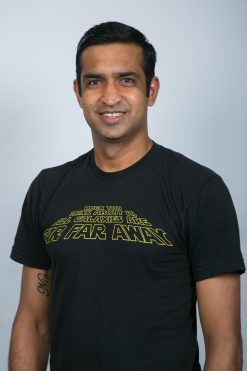 Dr Gaurav Gupta
Dr Gaurav Gupta
Vice-Chancellor’s Learning and Teaching Student Nominated Award
Dr Gupta has been at Macquarie for 14 years and says he has learnt as much from his students as they have learnt from him.
Gaurav uses technology to his advantage, with a YouTube channel that has over 50 educational videos.
“As educators, we must identify effective ways of engaging our students,” Gaurav says. “One of them is delivering micro-lectures (defined as videos under 10 minutes), uploaded to YouTube, that are short enough to watch in small pockets of time (for example, on public transport), simultaneously helping students achieve their learning outcomes.
“Platforms for lecture content like PDFs and PowerPoints are fast becoming redundant – at least in Computing – and we have replaced them with more interactive and web-based content. These are easily accessible from mobile devices and tablets, and can be viewed right in the browser. The ease of access and navigation contributes to student engagement and creates a positive attitude towards learning.”
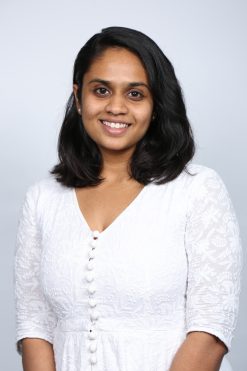 Ms Charanya Ramakrishnan
Ms Charanya Ramakrishnan
Vice-Chancellor’s Learning and Teaching Sessional Staff Award
Ms Ramakrishnan’s passion for teaching replicates itself as enthusiasm. She keeps the environment fun by walking into a lecture with a jolly, upbeat attitude to ensure students enjoy learning and remain engaged.
“I have realised that being serious may not be something millennials cherish,” she says.
“Students struggle to understand decades-old examples that might have become obsolete. I use current examples that students can relate to, to facilitate better understanding of concepts.
“I try to inspire students to stay tuned-in and be curious to make logical connections. This widely involves exciting and contemporary examples like Game of Thrones or Avengers in lectures, workshops and assignments. This motivates many students to further explore the topic independently outside of the lectures. Students are encouraged to write and draw, making learning a fun activity and it also helps students retain concepts more efficiently.”
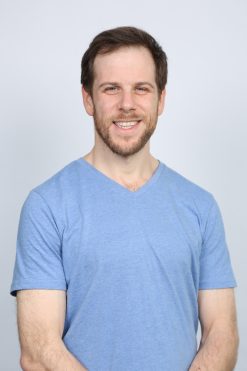 Dr Christopher Lustri
Dr Christopher Lustri
Vice-Chancellor’s Learning and Teaching Early Career Award
As a lecturer and convenor of multiple mathematics units, Dr Lustri has planned and developed new ways of teaching to engage with his students.
“Inspiring, motivating and guiding students is imperative when teaching mathematics,” he says. “Students are required to understand sophisticated and abstract ideas, and it is my job to help them see maths as a language they can use to understand the parts of the world they’re passionate about – such as biology, sociology, physics and engineering.”
Christopher also pioneered the use of a new teaching environment – Active Learning Space – and restructured MATH336 in order to best utilise the facility.
“By developing materials that were suited to the interactive learning space, I was able to engage students with collaborative project work in class time.”
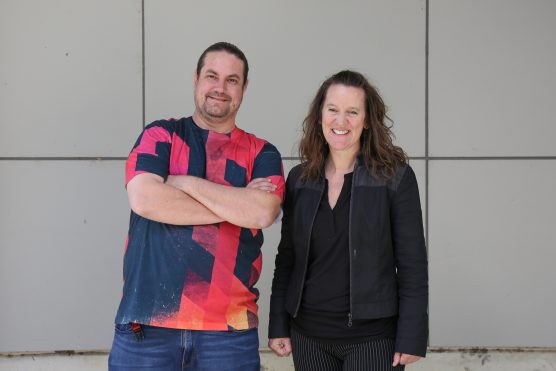 Associate Professor Kira Westaway
Associate Professor Kira Westaway
Vice-Chancellor’s Award for Learning Innovation (with team members: Michael Rampe and Matthew Cabanag – absent from photo)
Associate Professor Kira Westaway and team suggests that some of the major issues facing tertiary education are unengaged students with no curiosity and limited employability skills, as well as students who struggle to visualise concepts and form connections with the real world.
“Virtual Reality (VR) is a powerful tool that has not yet reached its full potential in educational environments,” Kira says. “There is the danger that VR is used as a gimmick rather than as an effective learning tool, leaving the student as a passive observer. Our Reality Embedded in Motion (REIM) project on the other hand places the students right in the middle of the action by using a bank of 10 fully mobile VR rigs that have been strategically housed around campus to facilitate University-wide engaging, inspiring applications.”
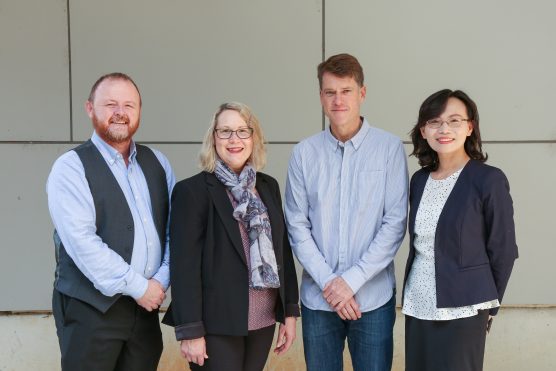 Dr Matthew Bulbert
Dr Matthew Bulbert
Biology Capstone (with team members: Fiona Jones, Associate Professor Martin Whiting and Serene Lin-Stephens)
Vice-Chancellor’s Award for Teaching Excellence
The Biology Capstone provides a transformative and stimulating learning environment embedded in a simulated think tank scenario to inspire students to assume a professional identity while learning.
“Our students are ‘employed’ as consultants within BioCap Corp which has its own branding with a student developed logo, Twitter feed and YouTube channel,” Matthew says.
“Assessments are embedded in an ongoing narrative with the students conducting market research, building a revenue stream from advocacy consultancy, applying for project funding to solve global challenges, and designing their own R&D projects.”
Serene adds that this unique ‘industry immersed’ learning environment is an authentic workplace experience that is planned and delivered by a team of experts from across the University and industry partners and has had significant impact on student retention and resource engagement.
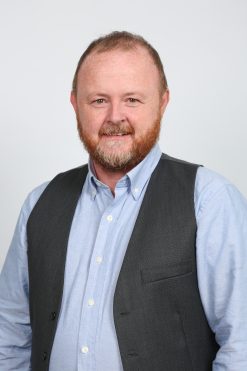 Vice-Chancellor’s Educational Leader Award
Vice-Chancellor’s Educational Leader Award
Dr Bulbert believes university curricula prepares students well for scientific research but that there is a further opportunity to teach students to translate their skills for non-research positions.
“In reality, the majority of undergraduates will not pursue research,” Matthew says. “To address this conflict, I have undertaken leadership in curriculum design and development by designing and implementing curricula which embeds academic and digital literacy, career and employability skills.”
Celebrate with your colleagues
Don’t forget to register your attendance for the event today!
The Academic Staff Awards will be held on Monday 18 November from 3pm to 5.30pm in the Graduation Hall (14 Sir Christopher Ondaatje Avenue).

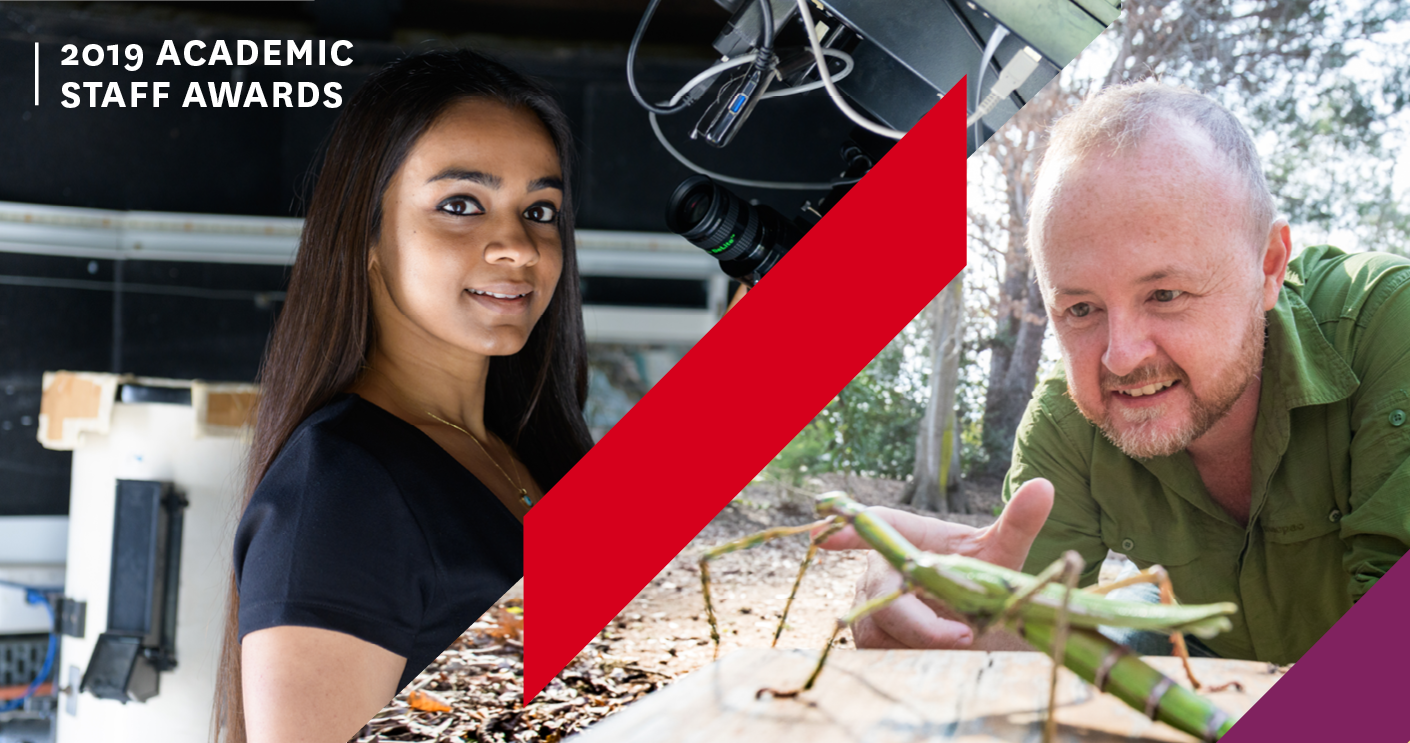
 Back to homepage
Back to homepage
Comments
We encourage active and constructive debate through our comments section, but please remain respectful. Your first and last name will be published alongside your comment.
Comments will not be pre-moderated but any comments deemed to be offensive, obscene, intimidating, discriminatory or defamatory will be removed and further action may be taken where such conduct breaches University policy or standards. Please keep in mind that This Week is a public site and comments should not contain information that is confidential or commercial in confidence.